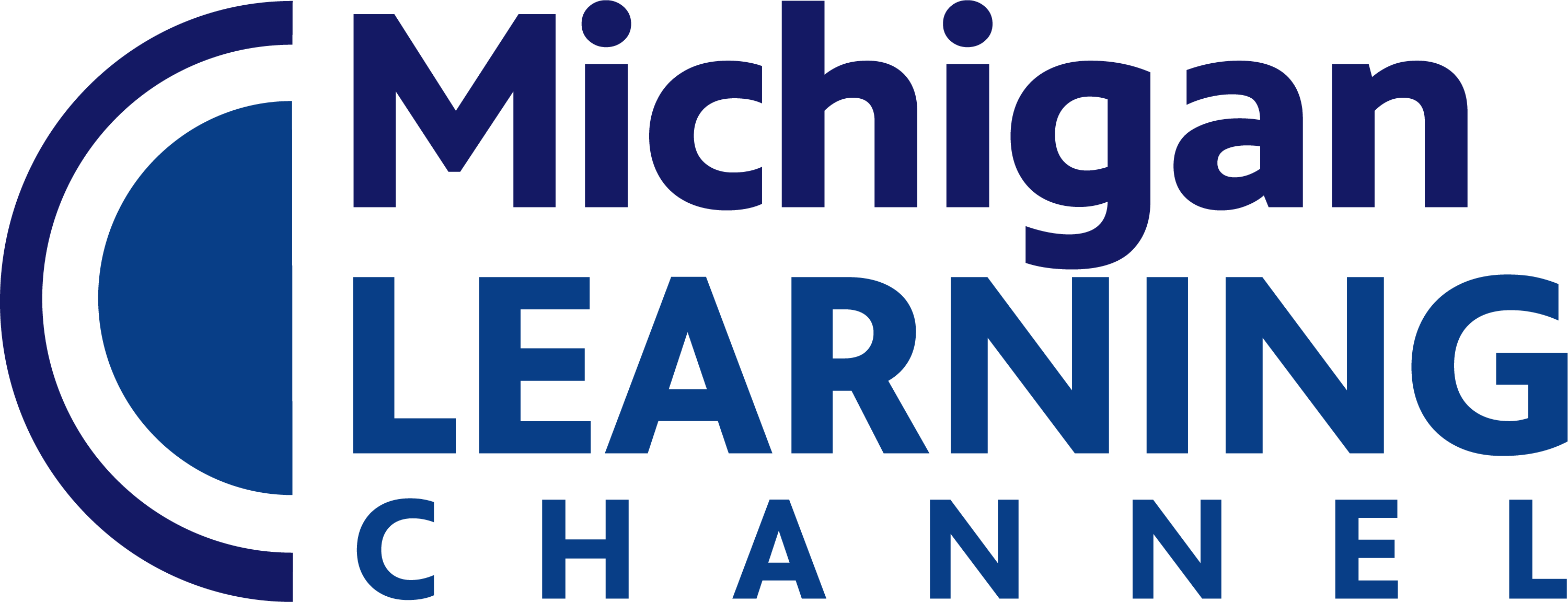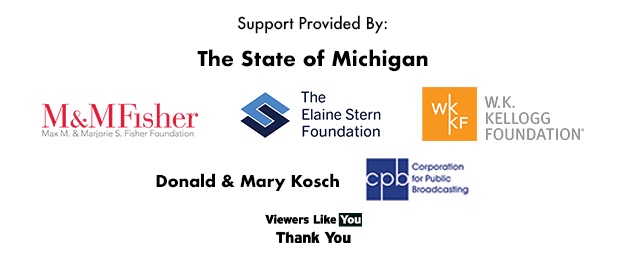Subjects
Shows
Protecting and Insuring – assess the financial risk of lost income, assets, health, or identity, and determine if a person [...]
Consequences of Governmental Policy – assess the incentives for political leaders to implement policies that disperse costs widely over large [...]
Price Controls – analyze the impact of price ceilings and price floors on the quantity of a good or service [...]
Circular Flow and the National Economy – using the concept of circular flow, analyze the roles of and relationship between [...]
Economic Indicators – using a number of indicators, such as gross domestic product (GDP), per capita GDP, unemployment rates, and [...]
Government Involvement in the Economy – evaluate the three macroeconomic goals of an economic systen (stable prices, low unemployment, and [...]
Government Revenue and Services – evaluate the ways in which the federal government generates revenue on consumption, income, and wealth, [...]
Fiscal Policy and its Consequences – analyze the consequences (intended and unintended) of using various tax and spending policies to [...]
Federal Reserve and Monetary Policy – explain the roles and responsibilities of the Federal Reserve system and compare and contrast [...]
Developing Nations – assess how factors such as availability of natural resources, investments in human and physical capital, technical assistance, [...]
International Organizations and the World Economy – evaluate the diverse impact of trade policies of the World Trade Organization, World [...]
Comparing Economic Systems – compare and contrast the characteristics, advantages, and disadvantages of traditional, command, market, and mixed economic systems.
Impact of Transitional Economies – analyze the impact of transitional economies, such as in China and India, on the global [...]
Absolute and Comparative Advantage – use the concepts of absolute and comparative advantages to explain why goods and services are [...]
Domestic Activity and World Trade – assess the impact of trade policies, monetary policy, exchange rates, and interest rates on [...]
Exchange Rate and World Trade – analyze the effects on trade from a change in an exchange rate between two [...]
The Global Economy and the Marketplace – analyze and describe how the global economy has changed the interaction of buyers [...]
Earning Income - conduct research regarding potential income and employee benefit packages, non-income factors that may influence career choice, benefits [...]
Buying Goods And Services – describe the factors that consumers may consider when purchasing a good or service, including the [...]
Saving – identify the incentives people have to set aside income for future consumption, and evaluate the impact of time, [...]
Using Credit – evaluate the benefits, costs, and potential impacts of using credit to purchase goods and services.
Explain how the United States has limited and expanded citizenship over time.
Compare and contrast rights and representation among U.S. people and citizens living in states, territories, federal districts, and on tribally [...]
Using examples, explain the rights and responsibilities of U.S. citizens as well as people living in the United States.
Explain the personal dispositions that contribute to knowledgeable and engaged participation in civic communities.
Explain and evaluate how people, individually or collectively, seek to bring the United States closer to its Democratic Values.
Identify, discuss, and analyze methods individuals and/or groups have chosen to attempt social and legal change. Assess the effects of [...]
Identify and describe a local, state, national, or international public policy issue; research and evaluate multiple solutions; analyze the consequences [...]
Equip students with the skills and knowledge to explore multiple pathways for knowledgeable, civic engagement through simulations and/or real-world opportunities [...]
Scarcity, Choice, Opportunity Costs, Incentives – using examples, explain how scarcity, choice, opportunity costs, and incentives affect decisions made by [...]
Entrepreneurship – analyze the risks and rewards of entrepreneurship and associate the functions of entrepreneurs with alleviating problems associated with [...]
Marginal Analysis – weigh marginal benefits and marginal costs in decision making.
Institutions – describe the roles of various economic institutions and purposes they serve in a market economy.
Market Structures – identify the characteristics of perfect competition, monopolistic competition, oligopoly, and monopoly market structures.
Supply And Demand – use the laws of supply and demand to explain household and business behavior.
Price, Equilibrium, Elasticity, and Incentives – analyze how prices change through the interaction of buyers and sellers in a market, [...]
Public Policy and the Market – analyze the impact of a change in public policy on consumers, producers, workers, savers, [...]
Government and Consumers – analyze the role of government in protecting consumers and enforcing contracts (including property rights), and explain [...]
Government Revenue and Services – analyze the ways in which local and state governments generate revenue and use that revenue [...]
Market Failure – explain the role for government in addressing both negative and positive externalities.
Explain the concept of public opinion, factors that shape it, and contrasting views on the role it should and does [...]
Explain the significance of campaigns and elections in American politics, currect criticisms of campaigns, and proposals for their reform.
Identify and discuss roles of non-governmental organizations in American civic society.
Explain functions and possible influence of various news and other media sources in political communication.
Analyze the credibility and validity of various forms of political communication.
Describe the five essential rights protected by the First Amendment. Through the use of court cases and examples, explore and [...]
Using the Fourth, Fifth, Sixth, Seventh, and Eighth Amendments, describe the rights of the accused; using court cases and examples, [...]
Explain how the Civil War led to the creation of the Thirteenth, Fourteenth, and Fifteenth Amendments to the U.S. Constitution. [...]
Explain how significant historical events, including but not limited to the suffrage movements and the civil rights movements, resulted in [...]
Subjects
Shows
Protecting and Insuring – assess the financial risk of lost income, assets, health, or identity, and determine if a person [...]
Consequences of Governmental Policy – assess the incentives for political leaders to implement policies that disperse costs widely over large [...]
Price Controls – analyze the impact of price ceilings and price floors on the quantity of a good or service [...]
Circular Flow and the National Economy – using the concept of circular flow, analyze the roles of and relationship between [...]
Economic Indicators – using a number of indicators, such as gross domestic product (GDP), per capita GDP, unemployment rates, and [...]
Government Involvement in the Economy – evaluate the three macroeconomic goals of an economic systen (stable prices, low unemployment, and [...]
Government Revenue and Services – evaluate the ways in which the federal government generates revenue on consumption, income, and wealth, [...]
Fiscal Policy and its Consequences – analyze the consequences (intended and unintended) of using various tax and spending policies to [...]
Federal Reserve and Monetary Policy – explain the roles and responsibilities of the Federal Reserve system and compare and contrast [...]
Developing Nations – assess how factors such as availability of natural resources, investments in human and physical capital, technical assistance, [...]
International Organizations and the World Economy – evaluate the diverse impact of trade policies of the World Trade Organization, World [...]
Comparing Economic Systems – compare and contrast the characteristics, advantages, and disadvantages of traditional, command, market, and mixed economic systems.
Impact of Transitional Economies – analyze the impact of transitional economies, such as in China and India, on the global [...]
Absolute and Comparative Advantage – use the concepts of absolute and comparative advantages to explain why goods and services are [...]
Domestic Activity and World Trade – assess the impact of trade policies, monetary policy, exchange rates, and interest rates on [...]
Exchange Rate and World Trade – analyze the effects on trade from a change in an exchange rate between two [...]
The Global Economy and the Marketplace – analyze and describe how the global economy has changed the interaction of buyers [...]
Earning Income - conduct research regarding potential income and employee benefit packages, non-income factors that may influence career choice, benefits [...]
Buying Goods And Services – describe the factors that consumers may consider when purchasing a good or service, including the [...]
Saving – identify the incentives people have to set aside income for future consumption, and evaluate the impact of time, [...]
Using Credit – evaluate the benefits, costs, and potential impacts of using credit to purchase goods and services.
Explain how the United States has limited and expanded citizenship over time.
Compare and contrast rights and representation among U.S. people and citizens living in states, territories, federal districts, and on tribally [...]
Using examples, explain the rights and responsibilities of U.S. citizens as well as people living in the United States.
Explain the personal dispositions that contribute to knowledgeable and engaged participation in civic communities.
Explain and evaluate how people, individually or collectively, seek to bring the United States closer to its Democratic Values.
Identify, discuss, and analyze methods individuals and/or groups have chosen to attempt social and legal change. Assess the effects of [...]
Identify and describe a local, state, national, or international public policy issue; research and evaluate multiple solutions; analyze the consequences [...]
Equip students with the skills and knowledge to explore multiple pathways for knowledgeable, civic engagement through simulations and/or real-world opportunities [...]
Scarcity, Choice, Opportunity Costs, Incentives – using examples, explain how scarcity, choice, opportunity costs, and incentives affect decisions made by [...]
Entrepreneurship – analyze the risks and rewards of entrepreneurship and associate the functions of entrepreneurs with alleviating problems associated with [...]
Marginal Analysis – weigh marginal benefits and marginal costs in decision making.
Institutions – describe the roles of various economic institutions and purposes they serve in a market economy.
Market Structures – identify the characteristics of perfect competition, monopolistic competition, oligopoly, and monopoly market structures.
Supply And Demand – use the laws of supply and demand to explain household and business behavior.
Price, Equilibrium, Elasticity, and Incentives – analyze how prices change through the interaction of buyers and sellers in a market, [...]
Public Policy and the Market – analyze the impact of a change in public policy on consumers, producers, workers, savers, [...]
Government and Consumers – analyze the role of government in protecting consumers and enforcing contracts (including property rights), and explain [...]
Government Revenue and Services – analyze the ways in which local and state governments generate revenue and use that revenue [...]
Market Failure – explain the role for government in addressing both negative and positive externalities.
Explain the concept of public opinion, factors that shape it, and contrasting views on the role it should and does [...]
Explain the significance of campaigns and elections in American politics, currect criticisms of campaigns, and proposals for their reform.
Identify and discuss roles of non-governmental organizations in American civic society.
Explain functions and possible influence of various news and other media sources in political communication.
Analyze the credibility and validity of various forms of political communication.
Describe the five essential rights protected by the First Amendment. Through the use of court cases and examples, explore and [...]
Using the Fourth, Fifth, Sixth, Seventh, and Eighth Amendments, describe the rights of the accused; using court cases and examples, [...]
Explain how the Civil War led to the creation of the Thirteenth, Fourteenth, and Fifteenth Amendments to the U.S. Constitution. [...]
Explain how significant historical events, including but not limited to the suffrage movements and the civil rights movements, resulted in [...]


